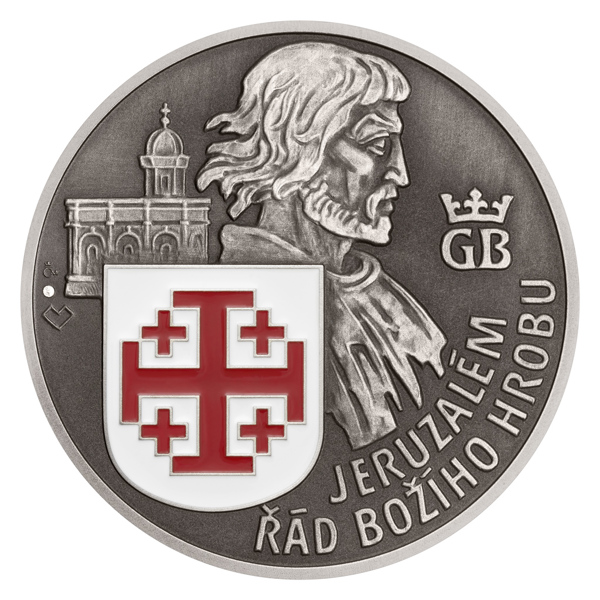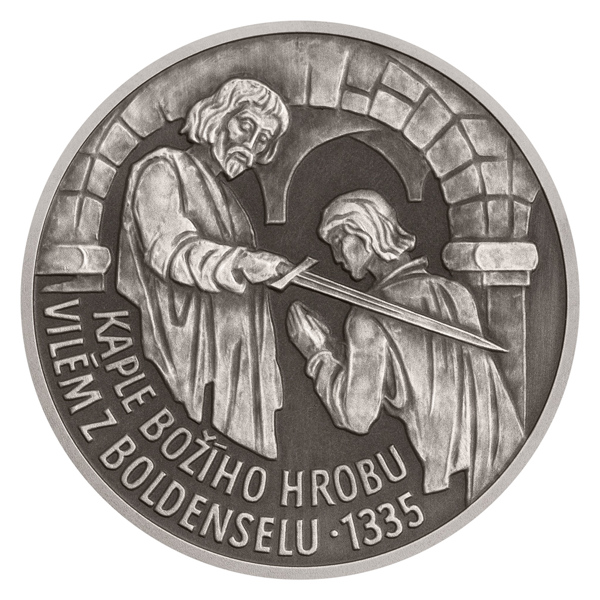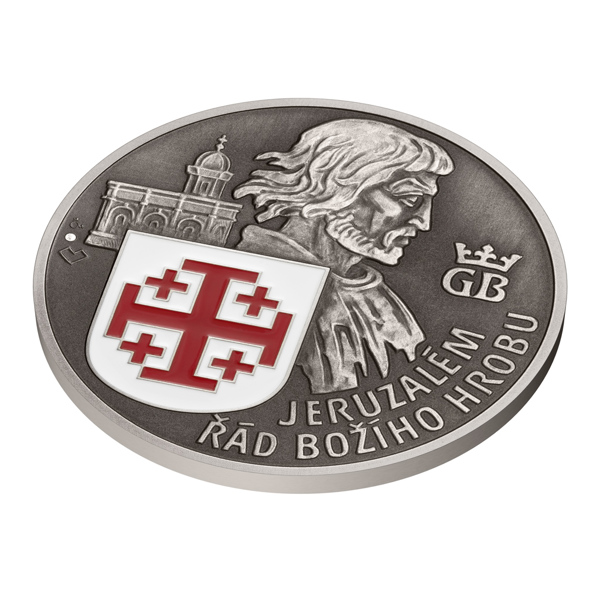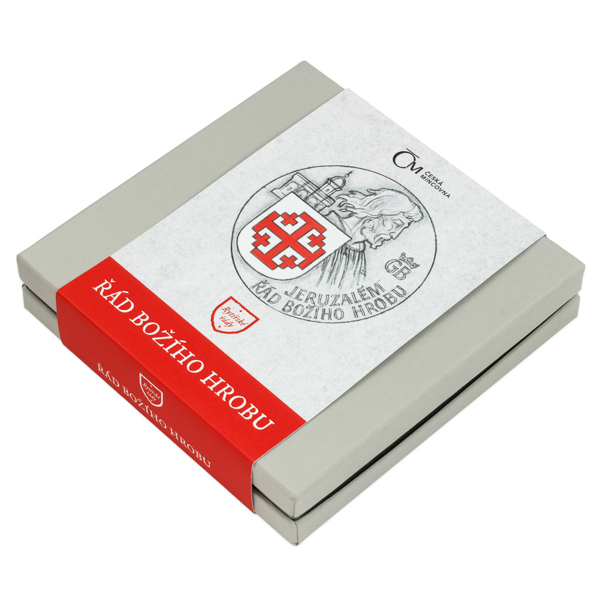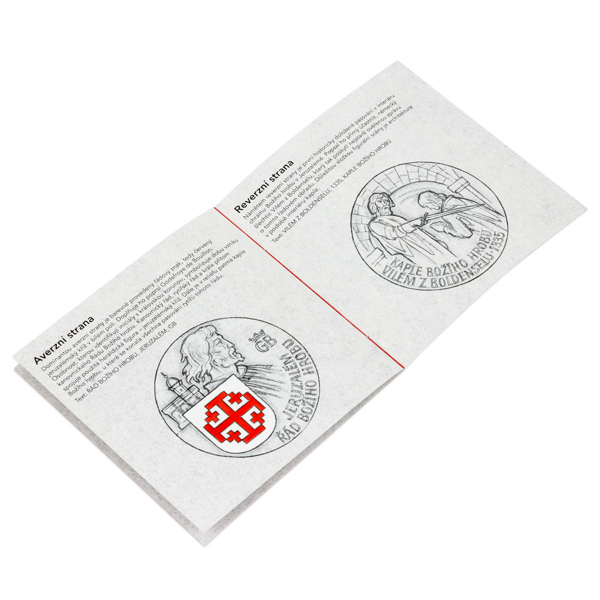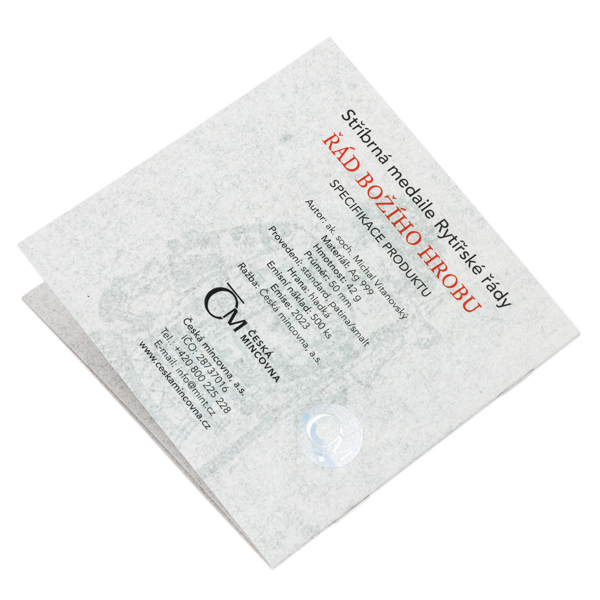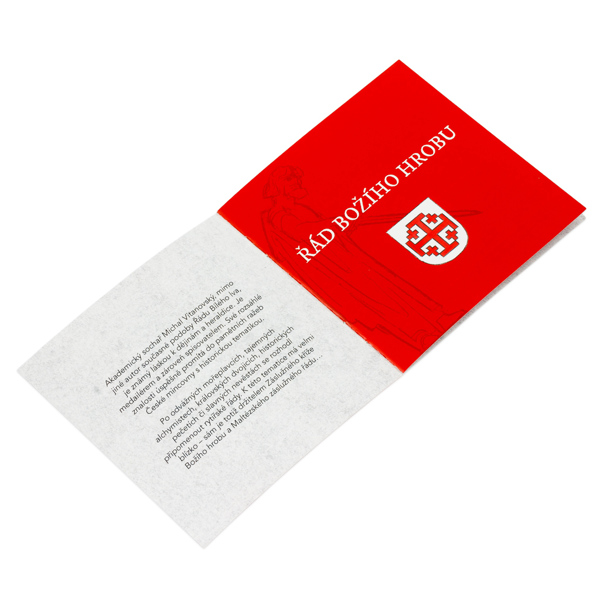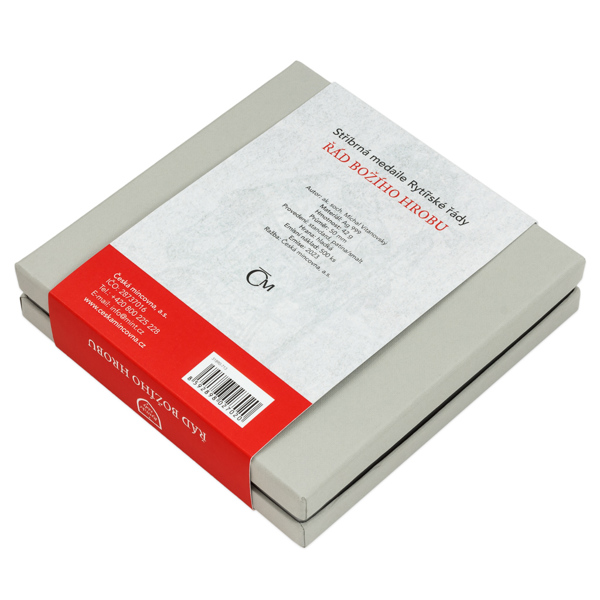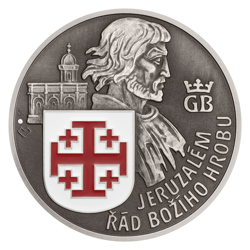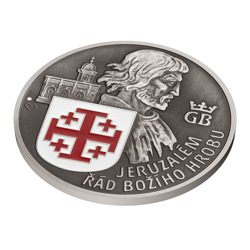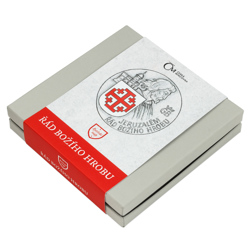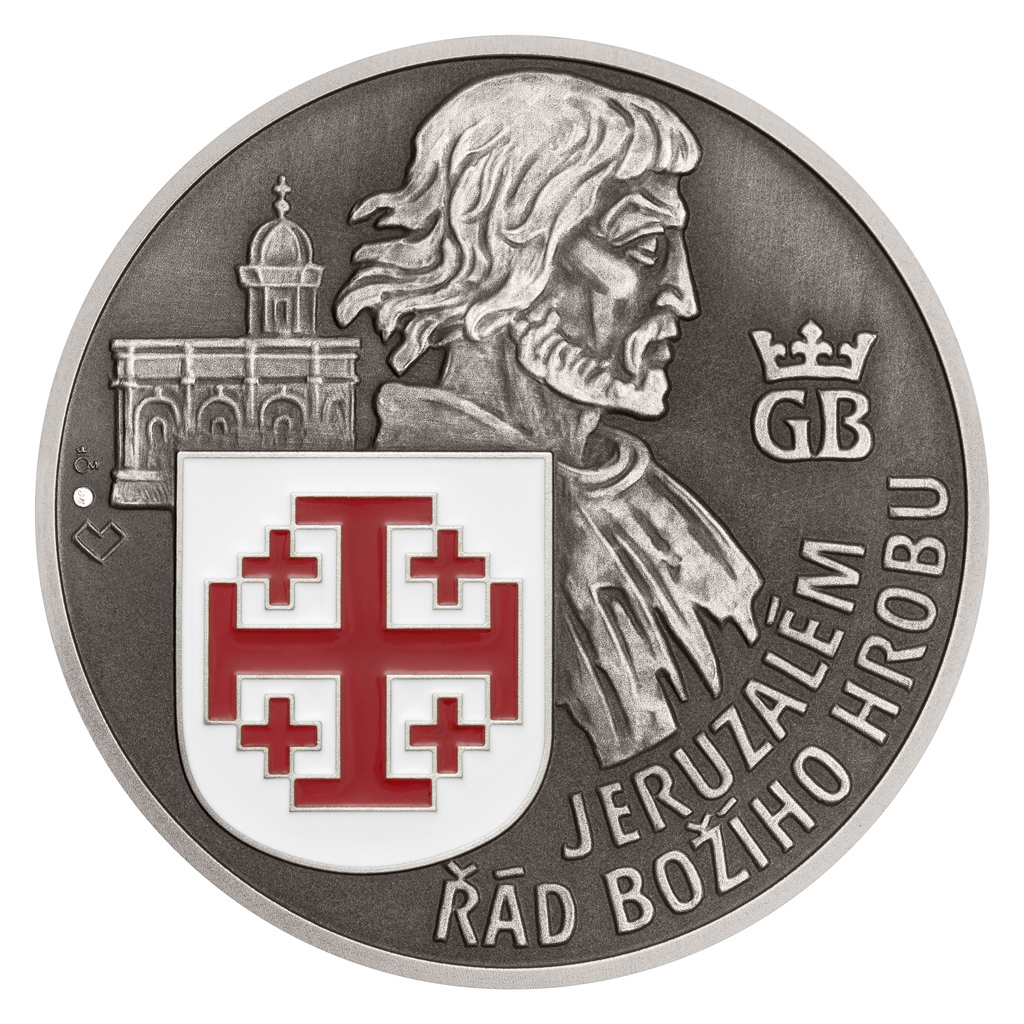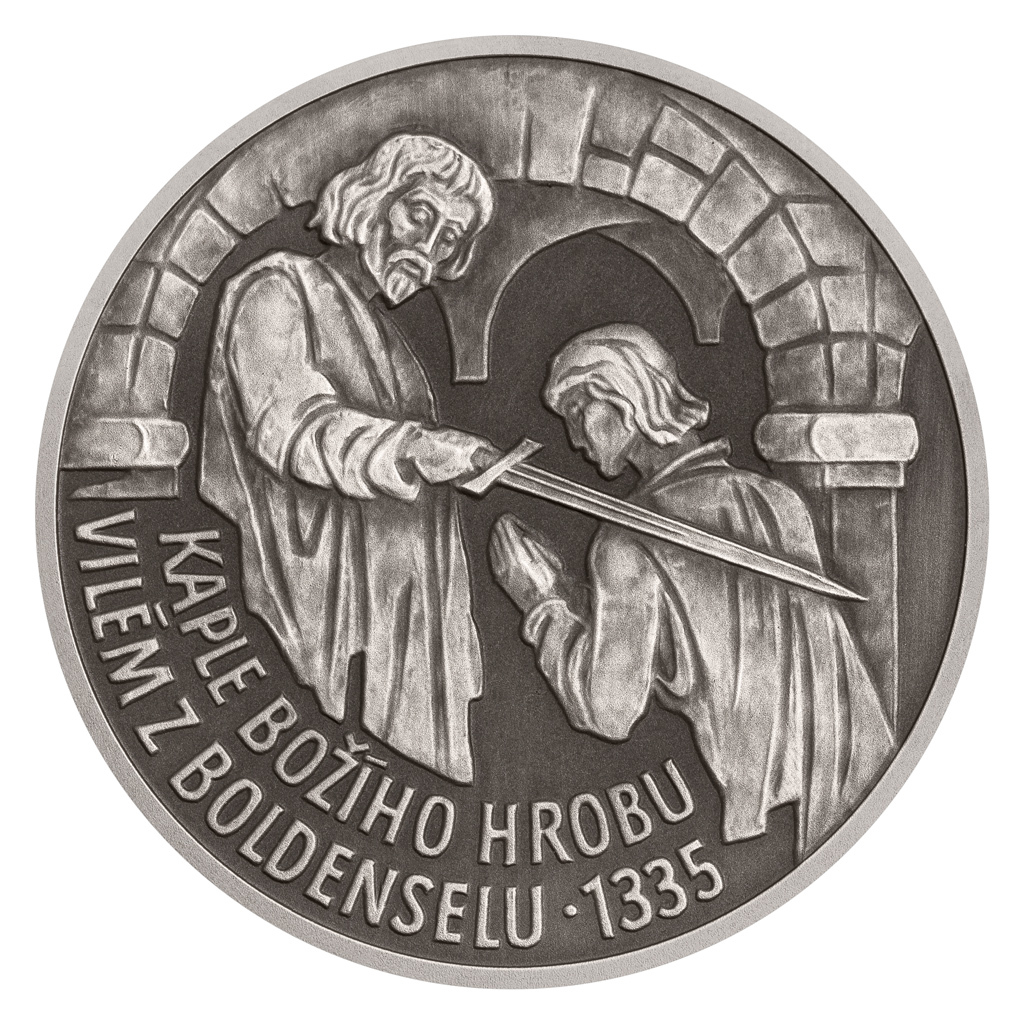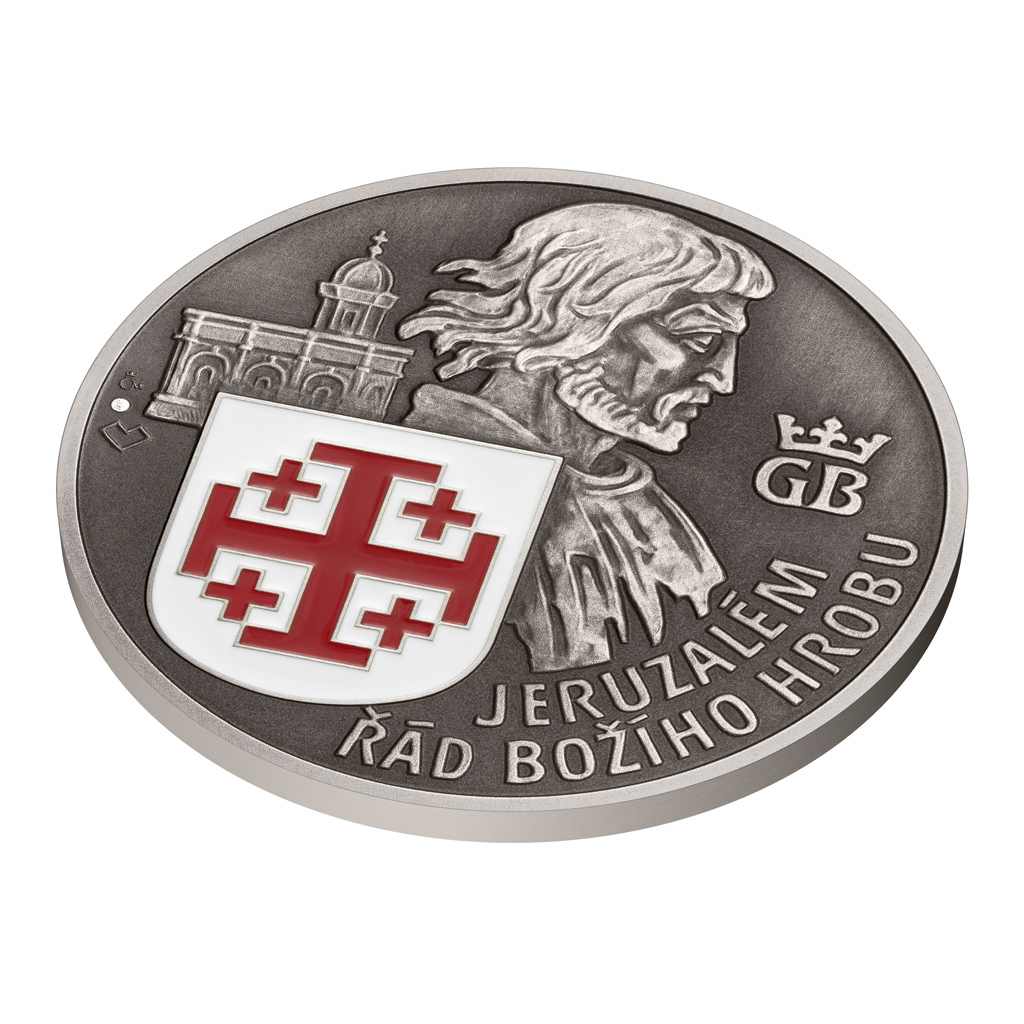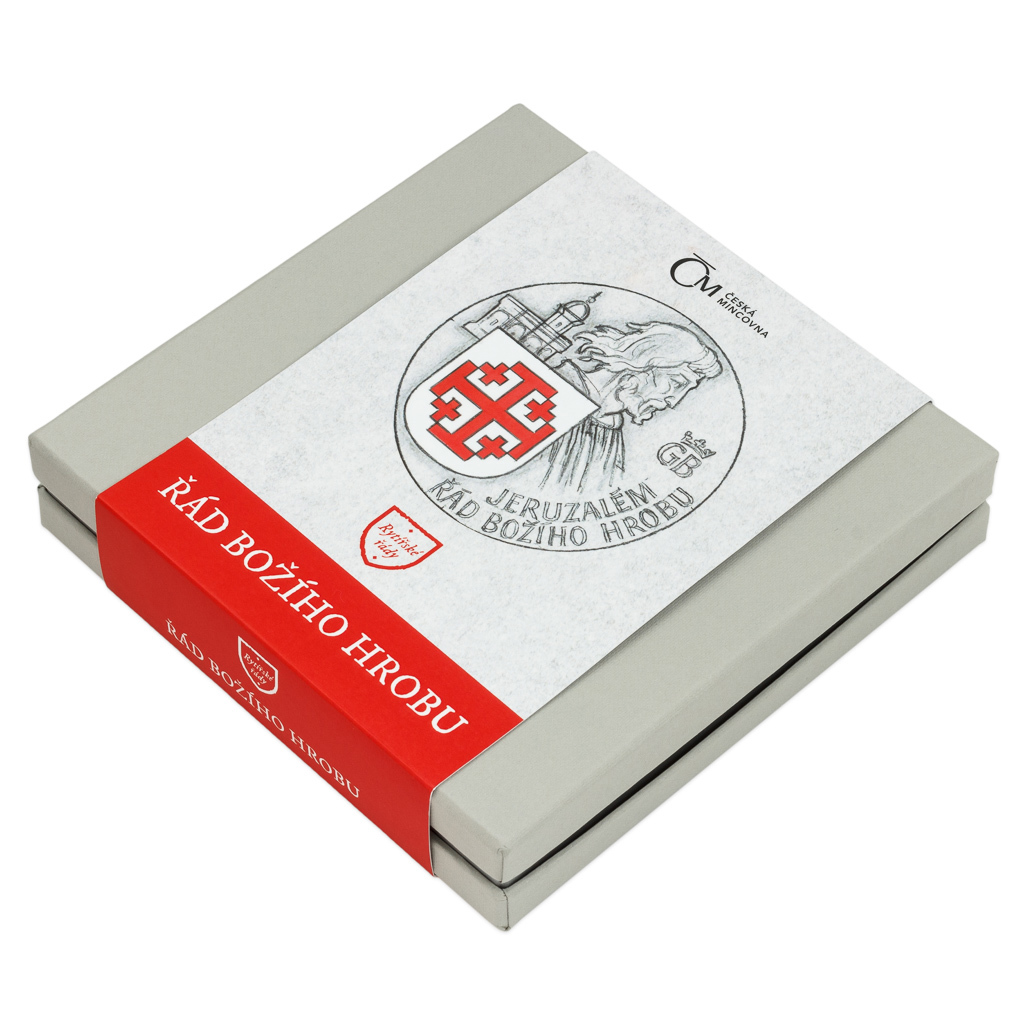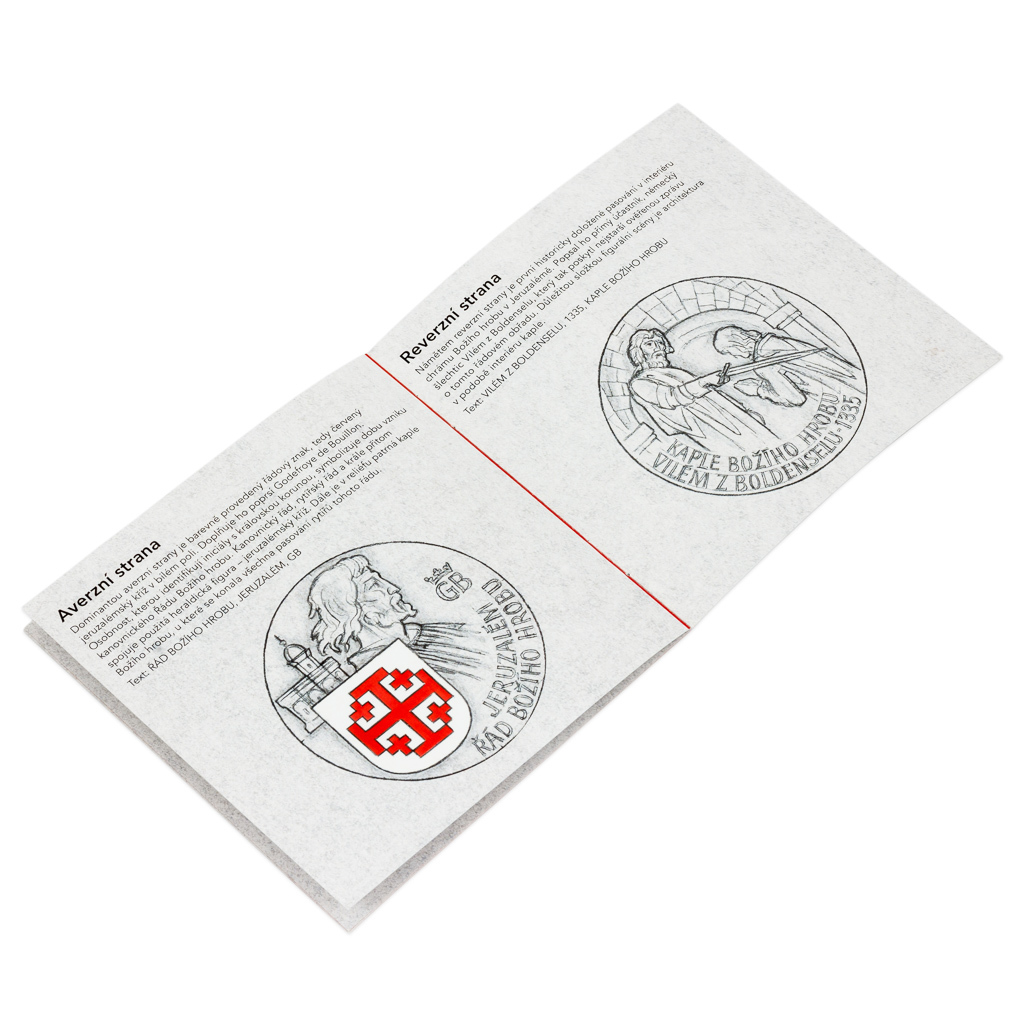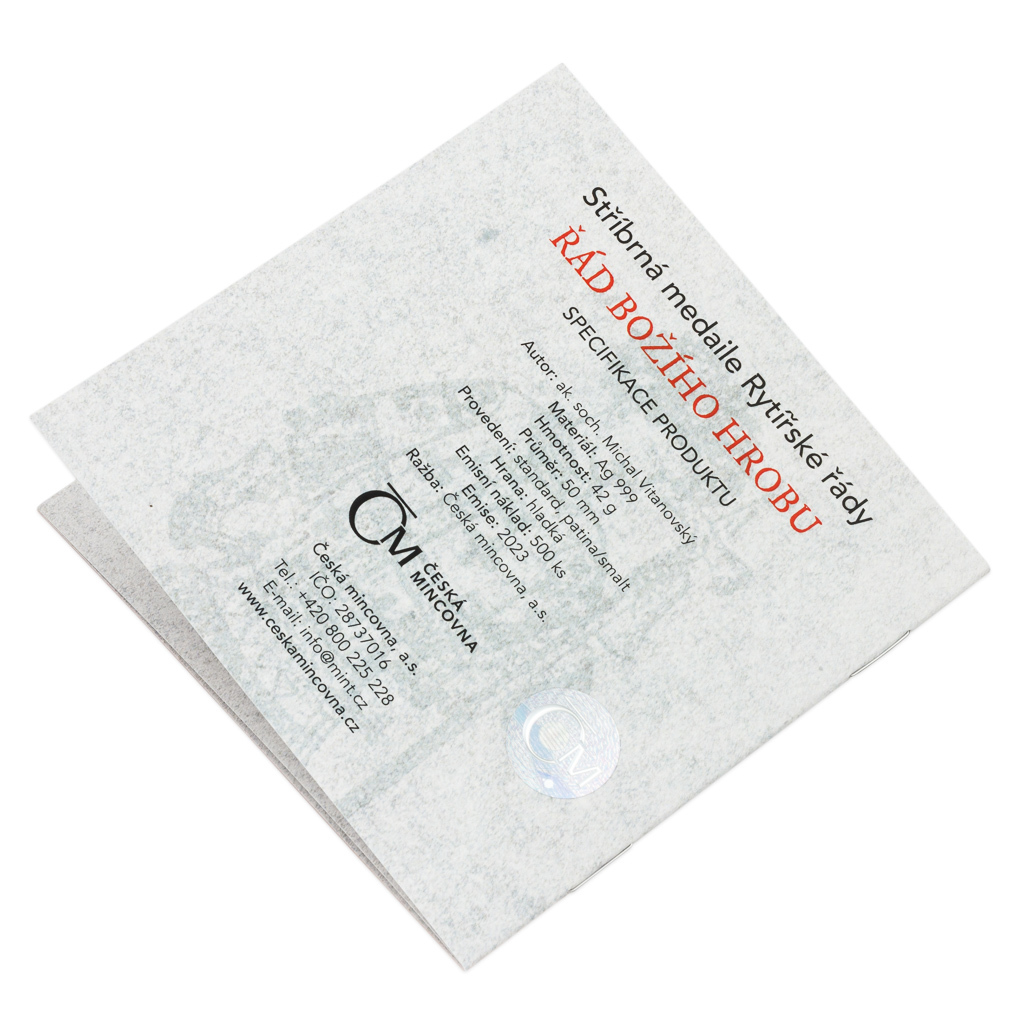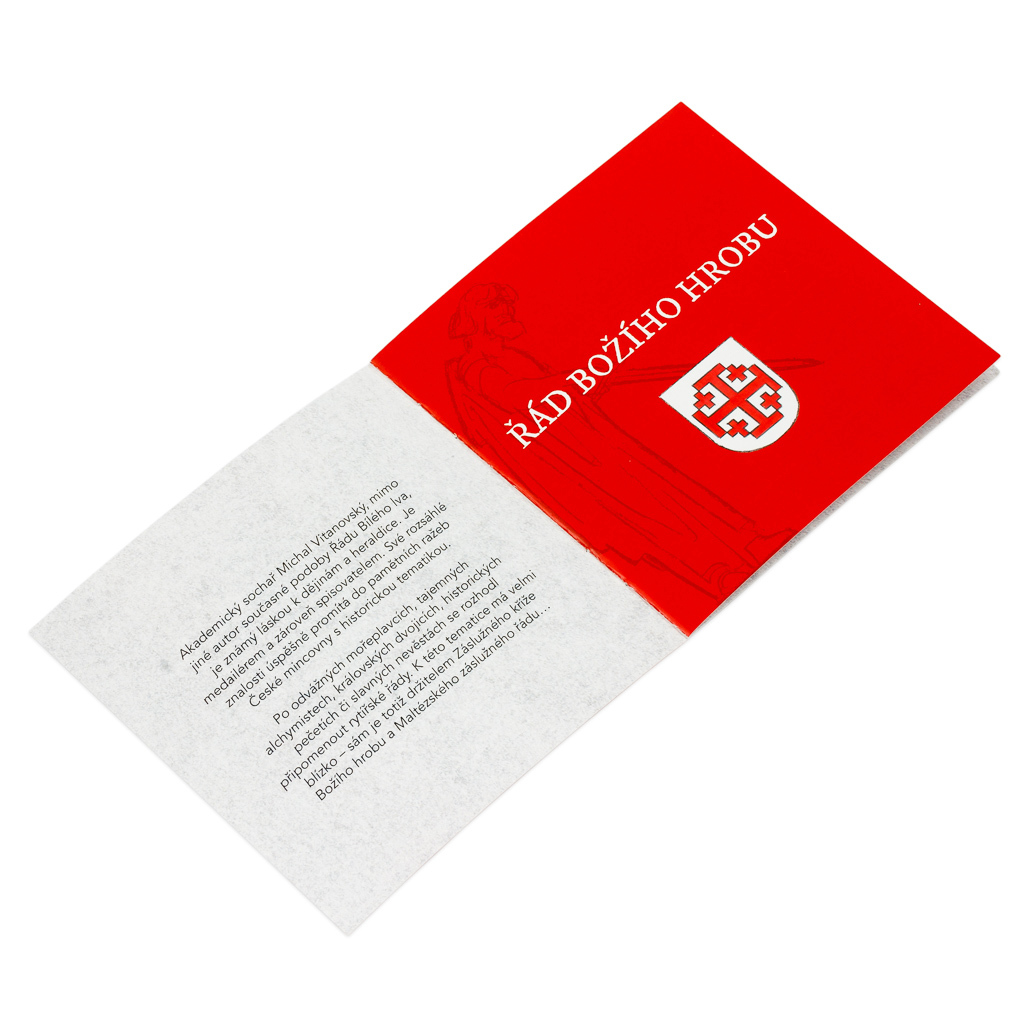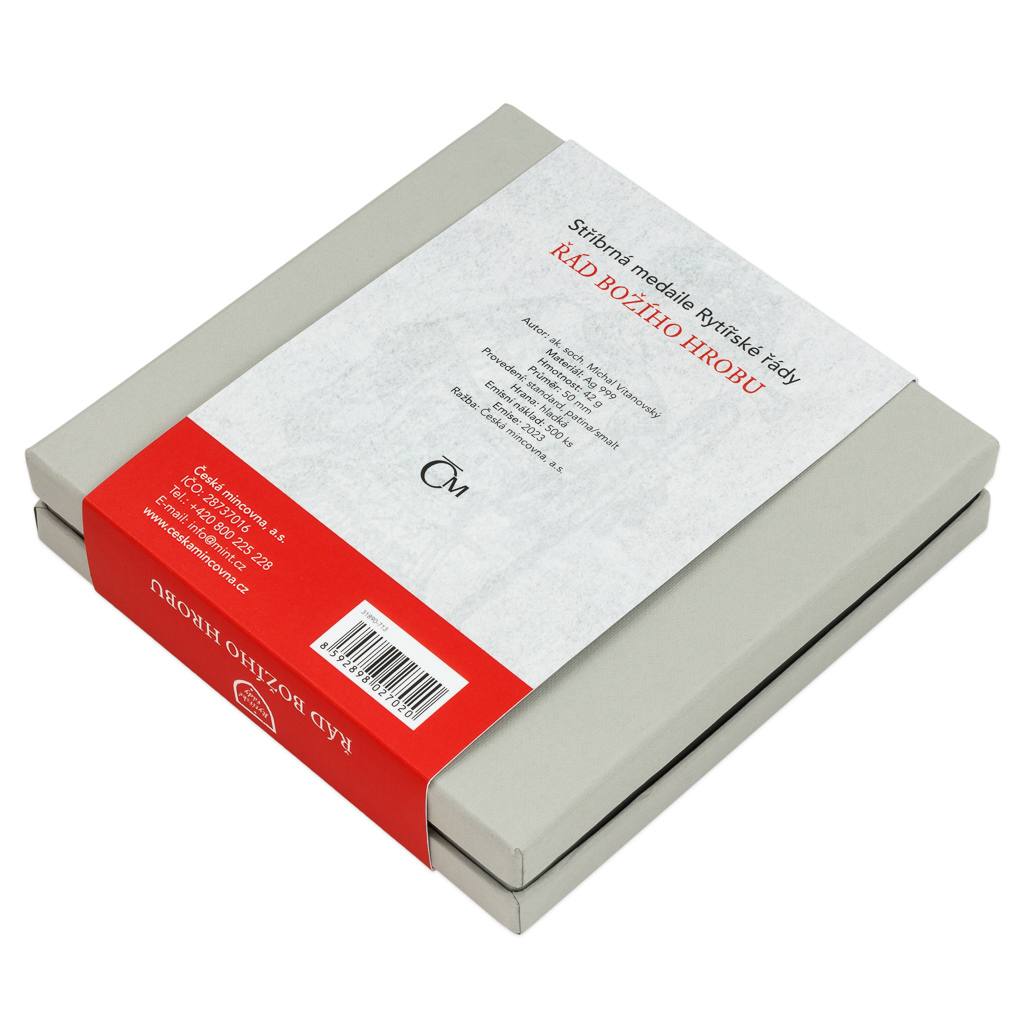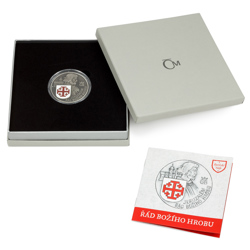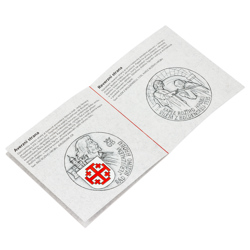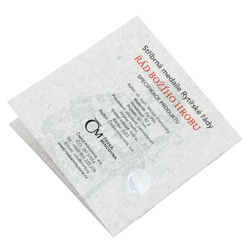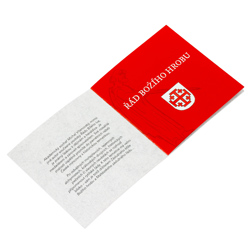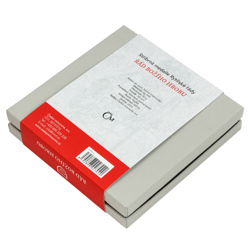Silver medal Knightly orders - The Knights God's Grave stand
Personal pickup at the store
Product description
Michal Vitanovský recalls the fate of famous knightly orders through silver medals of the Czech Mint. This academic sculptor is the most authoritative - he is a holder of the Cross of Merit of the Holy Sepulchre and the Order of Merit of Malta. He dedicated the second edition to the Order of the Holy Sepulchre.
According to the Gospels, the Holy Sepulchre in Jerusalem is the place where Jesus Christ was crucified and rose from the dead. It is therefore not surprising that in the Middle Ages it was the most important destination for Christians in the Holy Land. Shortly after the end of the Crusades, pilgrims began to arrive here, some of whom were given the extraordinary honour of being knighted and entrusted with the protection of the holy place. The first documented knighting ceremony took place in the Basilica of the Holy Sepulchre in 1335, but indirect references to knighting in Jerusalem can be found in earlier texts from the 11th century. At that time, Godefroy de Bouillon, the first ruler of the Kingdom of Jerusalem, founded the Canonical Order of the Holy Sepulchre, alongside which the eponymous Order of Knights was later established. Although the two communities are not directly related, they are linked by their place of origin and by their sign, the Cross of Jerusalem, which is an exceptional heraldic figure consisting of a crutch cross and four Greek crosses. Unlike other orders, such as the Knights Templar, the Knights of St. John, the Knights of the Lazar, or the Knights of the Teutonic Knights, the Knights of the Holy Sepulchre did not have a fixed organisational structure or a clearly defined function. The Order was mainly made up of idealistic noblemen with a desire for authentic chivalry, who became a transnational community of individuals sharing the same ideals. The Order was only able to exist at a time when the Holy Sepulchre was controlled by hostile Muslims because of the Franciscans, who were allowed by the Sultan to operate in the Middle East and perform Christian rites - including ordination. For a long time, it was the only manifestation of the Catholic Church's presence in the Holy Land…
The reverse side of the commemorative medal is dominated by the moment of the first historically documented ordination inside the Church of the Holy Sepulchre in Jerusalem. "It was described by a direct participant, the German nobleman William of Boldensel, who thus provided the oldest historically verified account of this ceremony," explains academic sculptor Michal Vitanovský. On the obverse side of the medal, the emblem of the Order - a red cross in a white area made of coloured enamel - catches the eye. "It is supplemented with the bust of the first King of Jerusalem, Godefroy de Bouillon, who is identified by his initials with the royal crown. His distinctive personality is intended to symbolise the era in which a parallel organisation was founded - namely the Canonical Order of the Holy Sepulchre, which he founded. The Order of Canons, the Knights of the Holy Sepulchre and the personality of the King of Jerusalem are linked by the Cross of Jerusalem," adds the medal's author. The composition of the obverse side closes with the Chapel of the Holy Sepulchre, at which all the ordinations took place.
The issue includes a special appendix which introduces the Order of Knights and the individual details of the medal's relief via the words of Michal Vitanovský.
 čeština
čeština
 slovenčina
slovenčina
 english
english
